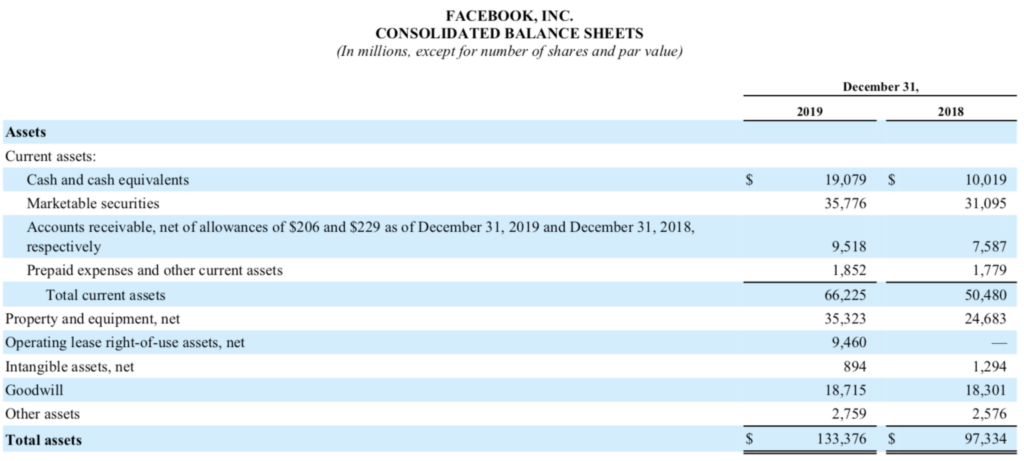- Demonstrate an understanding of accounting for short-term investments
When a corporation purchases the stock of another corporation, the method of accounting for the stock investment depends on the corporation’s motivation for making the investment and the relative size of the investment. A corporation’s motivation for purchasing the stock of another company may be: (1) as a short or long-term investment of excess cash; (2) as a long-term investment in a substantial percentage of another company’s stock to ensure a supply of a required raw material (for example, Albemarle’s investment in the Wodgina project); or (3) as a long-term investment for expansion (when a company purchases another profitable company rather than starting a new business operation, as Facebook did when it purchased WhatsApp).

Reporting these investments on the balance sheet depends on management’s intent. If the investment is intended to be temporary, it is categorized as a current asset. If it intended to be long-term, it is a noncurrent asset.
Trading securities include both debt securities (bonds) and equity securities (stocks) an entity intends to sell in the short term for a profit that it expects to generate from increases in the price of the securities, so they are always considered current assets.Trading is usually done through an organized stock exchange, which acts as the intermediary between a buyer and seller, though it is also possible to directly engage in purchase and sale transactions with counterparties.
Trading securities are recorded in the balance sheet of the investor at their fair value as of the balance sheet date. If there is a change in the fair value of such an asset from period to period, this change is recognized in the income statement as a gain or loss.
Other investments in marketable securities are classified as either available-for-sale or held-to-maturity.
- Held-to-maturity investments are usually bonds (loans to other companies) held until they come due, which may be years in the future.
- Available-for-sale securities don’t fit in the other two categories, and so may be classified as current or noncurrent, depending on the facts and circumstances.
In this section, we’ll focus on trading securities. Think of trading securities as your on-line brokerage account where you put a few extra dollars trying to earn a quick profit instead of letting that money sit in a savings account that pays very little. Available-for-sale securities and held-to-maturity securities are more like your 401(k) retirement plan, where you set it aside and leave it.

For example, Facebook, Inc. had almost $20 billion in cash and cash equivalents at the end of 2019 (see below) which may seem like a lot of cash sitting idle and not earning much return on investment (because cash and cash equivalents are invested in short-term, low-risk and therefore low-return but highly liquid securities). However, with annual operating expenses of almost $50 billion in 2019, plus cash needed for capital investments, $20 billion in the bank is not unreasonable. Imagine if your annual household expenses were $50,000 and you had $20,000 in the bank—that wouldn’t be unreasonable.
However, there is another $36 billion in marketable securities on the balance sheet (trading securities and short-term available-for-sale securities). Equate that to you personally having another $36,000 invested in the stock market. One question you might have is: where is all that cash coming from? In a later module, you’ll study the statement of cash flows, which may answer that question, but for now, we are just analyzing the balance sheet. It is clear though that Facebook has a lot of cash and liquid assets.

You can view the transcript for “9 – Intent-Based Accounting” here (opens in new window).
Investors in common stock can use two methods to account for their investments. The purchaser’s level of ownership determines whether the investment is accounted for by (a) the cost method or (b) the equity method.
Under both methods, the purchaser initially records the investment at cost (price paid at acquisition). Under the cost method, the investor company does not adjust the investment account balance subsequently for its share of the investee’s reported income, losses, and dividends. If the investor company receives dividends, it debits whatever money market or savings or checking account the dividend was deposited to and credits an income statement account called Dividend Revenue or something similar. That account is usually reported “below the line” (after operating income but before taxable income).
For example, YourCompany buys, via an EFT from the general checking account to a broker, 100 shares of Public, Inc. at $55 per share, and intends to sell it within six months, or as soon as it hits $60, whichever is sooner. The intent is to hold it short-term, and it is unlikely that YourCompany owns any significant portion of ownership. This is called a trading security and will be categorized as short-term, and we will use the cost method to account for such investments.
| Date | Description | Post. Ref. | Debit | Credit |
|---|---|---|---|---|
| Marketable Securities | $5,500 | |||
| Checking Account | $5,500 | |||
| To record the purchase of 100 shares of Public, Inc. |
When a dividend is deposited into our brokerage money market account, we record it as follows:
| Date | Description | Post. Ref. | Debit | Credit |
|---|---|---|---|---|
| Money Market Account | $5 | |||
| Dividend Revenue | $5 | |||
| To record receipt of Public, Inc. dividend. |
At year-end, companies adjust the book value of trading securities (and available-for-sale securities, covered in the next section) to fair market value. Fair market value is considered to be the market price of the securities or what a buyer or seller would pay to exchange the securities. An unrealized holding gain or loss will usually result in each portfolio.
To illustrate the application of the fair market value to trading securities, assume YourCompany only has that 100 shares of Public, Inc. stock in the trading securities portfolio. At year-end, based on the closing value from the stock market listing, the trading price is now $50. The journal entry required at the end of the year is:
| Date | Description | Post. Ref. | Debit | Credit |
|---|---|---|---|---|
| Dec 31 | Unrealized loss on trading securities | 500 | ||
| Dec 31 | Trading securities | 500 | ||
| Dec 31 | To record unrealized loss from market decline of trading securities. |
Note that the debit is to the Unrealized Loss on Trading Securities account. This loss is unrealized because the securities have not been sold. However, the loss is reported in the income statement as a deduction in arriving at net income. The credit in the preceding entry is to the Trading Securities account so as to adjust its balance to its fair market value. An unrealized holding gain would be an addition to net income. In addition, some companies may post the unrealized gains and losses to a contra or companion account. That is a bookkeeping decision.
If YourCompany sold the 100 shares of Public, Inc. in January of the next year at $60 per share, the company would receive $6,000. The gain on sale entry would be:
| Date | Description | Post. Ref. | Debit | Credit |
|---|---|---|---|---|
| Jan 1 | Checking Account | 6,000 | ||
| Jan 1 | Trading securities | 5,000 | ||
| Jan 1 | Gain on sale of trading securities | 1,000 | ||
| Jan 1 | To record the sale of YourCompany stock. |
No adjustment needs to be made to the unrealized loss account previously debited because the unrealized loss recorded last year has flowed through the income statement and been closed to retained earnings through the closing process.
Obviously, there would be a subsidiary ledger tracking the individual stocks, which could be as simple as the brokerage statement, as long as the amounts tie to the general ledger control account (trading securities).